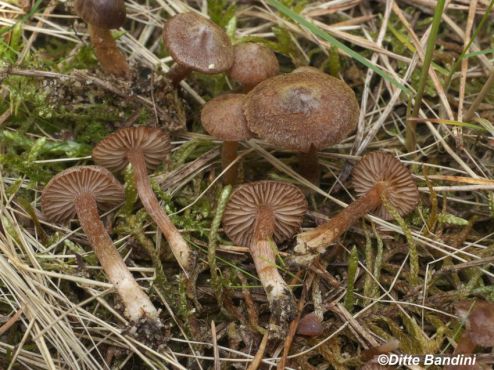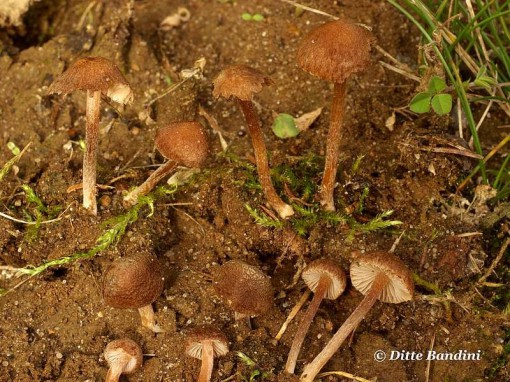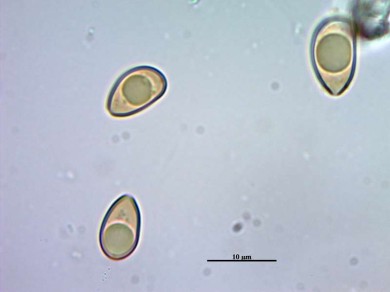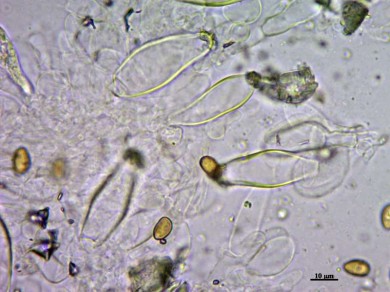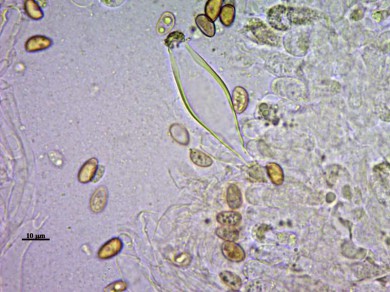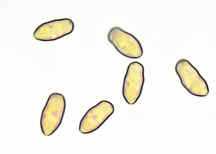Kurzbeschreibung:
- Hut bis ca. 2 cm
- Hutfarbe nussbraun oft mit rötlicher Nuance bis rotbraun
- Hutoberfläche feinfilzig bis wollig, später auch aufschuppend
- weißliche Velipellis
- Stiel nur oben bereift; rötlichbraun unter weißlicher Überfaserung
- Stielfleisch rötlich bis rotbraun
- Sporen glatt, 7.7–11.6 x 5.0–6.4 µm, av. 9.6 x 5.6 µm
- Hymenialzystiden meist kurz und (sub)fusiform, auch (sub)utriform, Pleurozystiden 28–66 x 10–18 µm, av. 47 x 14 µm, Wände bis ca. 2.0 µm, gelblich-grünlich mit KOH
- Standort oft auf eher saurem Boden meist mit Pinus, aber in alpiner Höhe auch mit Zwergweide
Short description:
- Pileus up to 2 cm
- Pileus colour nut-brown often with reddish hue to red-brown
- Pileus surface minutely tomentose to lanose, with age also (sub)squamulose
- whitish velipellis
- Stipe pruinose only near the apex; redbrown beneath whitish tomentum
- Context fo stipe red-brown
- Spores smooth, 7.7–11.6 x 5.0–6.4 µm, av. 9.6 x 5.6 µm
- Hymenial cystidia mostly short and (sub)fusiform, also (sub)utriform, pleurocystidia 28–66 x 10–18 µm, av. 47 x 14 µm, walls up to 2.0 µm, yellowish-greenish with KOH
- Growth often on rather acidic soil mostly with Pinus, but in alpine altitudes also with dwarf Salix


